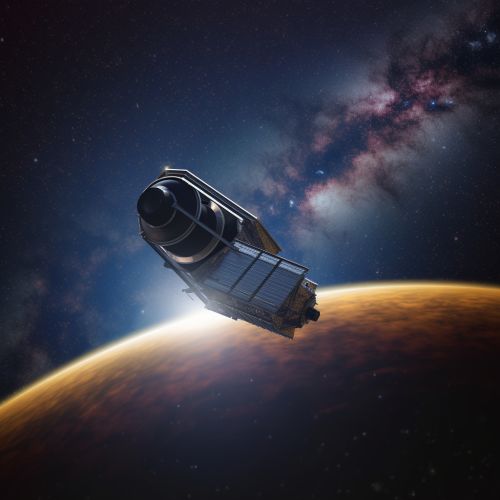Kepler Space Telescope
Overview
The Kepler Space Telescope, also known as the Kepler Mission, was a National Aeronautics and Space Administration initiative aimed at discovering Earth-like planets orbiting other stars. Launched on March 7, 2009, the space-based observatory was equipped with a photometer that continuously monitored the brightness of over 145,000 main sequence stars in a fixed field of view. The data collected by Kepler has provided statistical results on planet frequency around stars in our galaxy, the Milky Way.


Mission Objectives
The primary mission of the Kepler Space Telescope was to determine the frequency of Earth-sized and larger planets in the habitable zone of solar-like stars. The habitable zone, also known as the "Goldilocks Zone", refers to the region around a star where conditions could potentially allow for the presence of liquid water on a planet's surface, a condition believed to be necessary for life as we know it. Kepler's mission was designed to survey a portion of our region of the Milky Way to achieve these objectives.
Design and Development
The Kepler Space Telescope was a 0.95-meter diameter telescope with a field of view (FOV) of 105 square degrees. Its primary mirror was 1.4 meters in diameter. The telescope was equipped with a photometer, an instrument that measures the intensity of light, designed to observe a fixed pattern of more than 145,000 stars. The photometer used a CCD (Charge Coupled Device) detector array composed of 42 CCDs, each with a resolution of 2200x1024 pixels.
Methodology
Kepler's primary means of identifying potential planets was through the detection of transits, the phenomenon when a planet passes in front of its parent star, as seen from the telescope. The tiny decrease in the star's brightness, typically less than 1%, was measured and recorded. The periodic nature of the dimming, along with the amount of dimming, provided scientists with the information needed to confirm the presence of a planet and determine its size and orbit.
Discoveries
The Kepler Mission has been extremely successful, leading to the discovery of over 2,600 confirmed exoplanets as of October 2018. Among these, many are Earth-sized planets located in the habitable zone of their star. Kepler's data has also led to the discovery of multi-planet systems, where more than one planet orbits the same star.
Legacy
The Kepler Space Telescope was retired on October 30, 2018, after it ran out of fuel necessary for further science operations. However, its vast data set will continue to be mined for discoveries for many years to come. Kepler's findings have significantly contributed to the field of exoplanet studies and have helped to shape future missions, such as the Transiting Exoplanet Survey Satellite mission, which is designed to search for exoplanets on bright, nearby stars.
